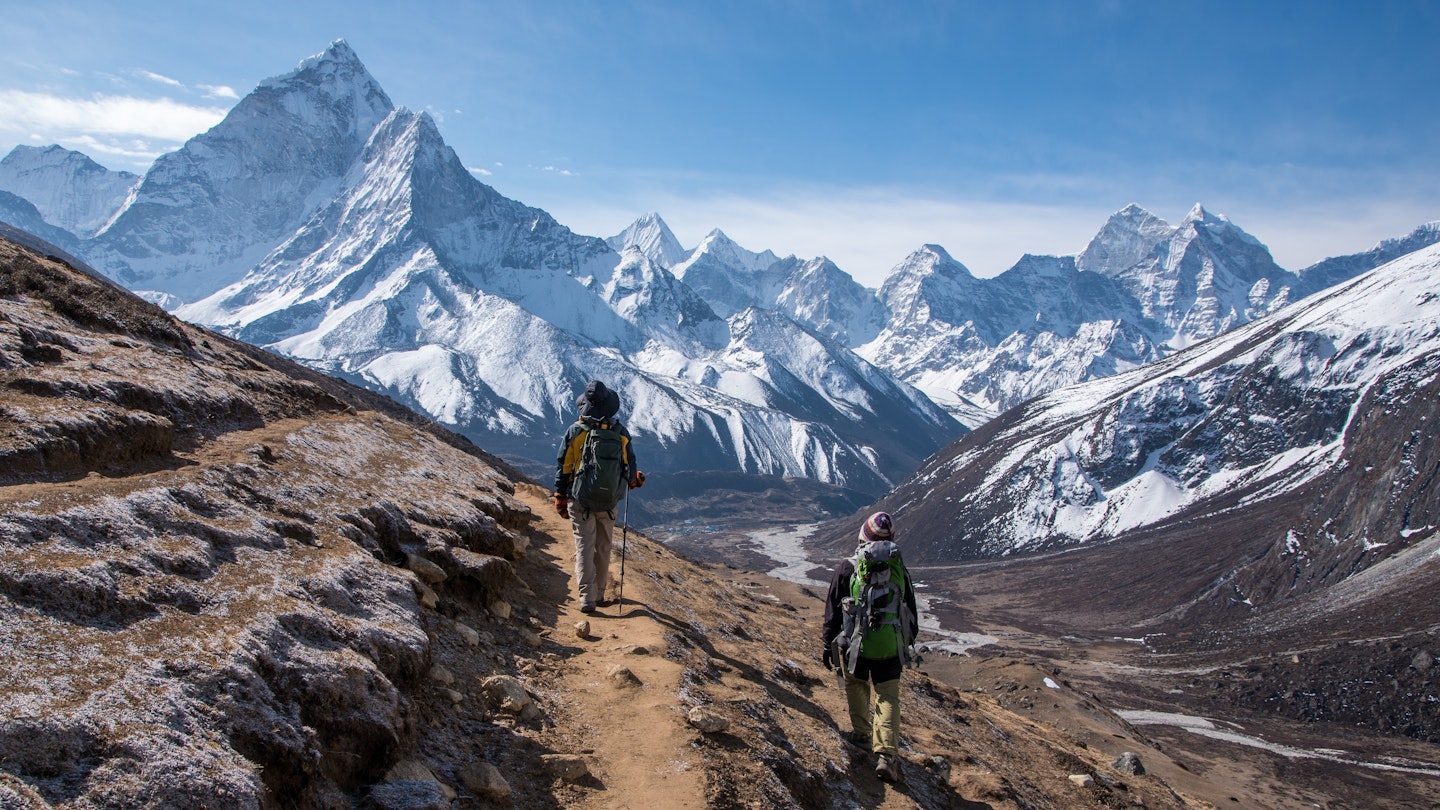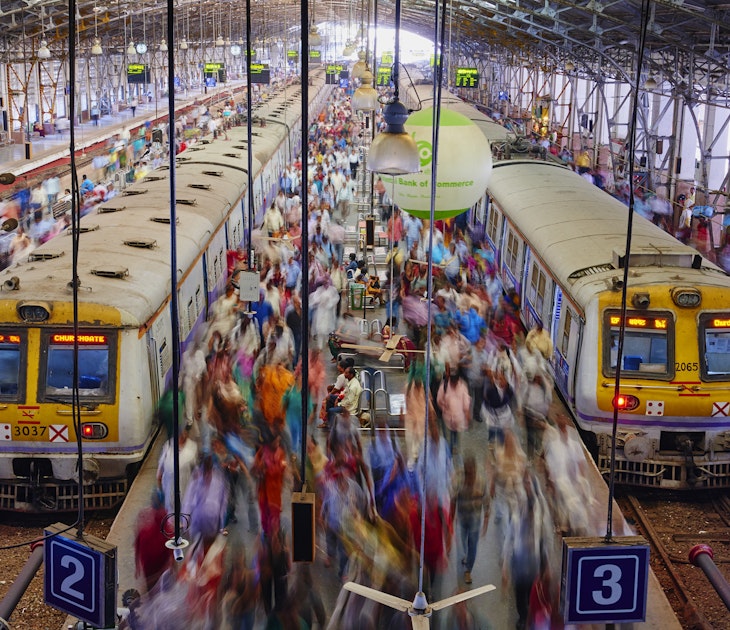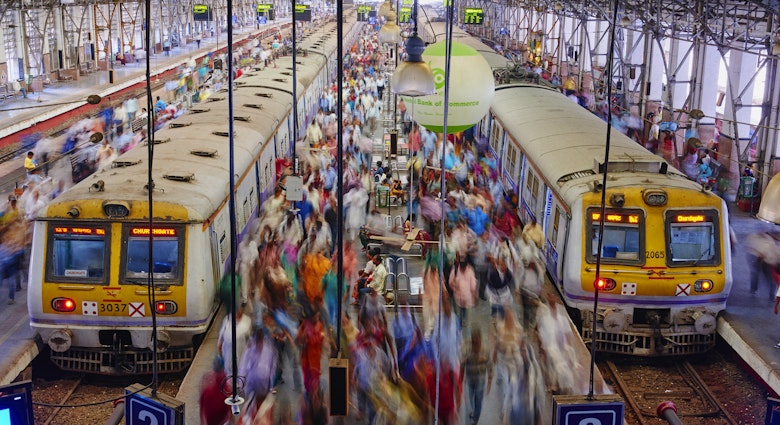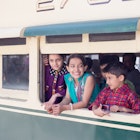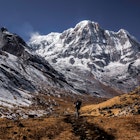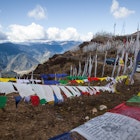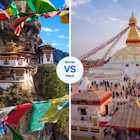Despite being only a smidge bigger than New York state, Nepal can be a tricky place to explore because of the mountainous terrain, the poor condition of many roads and vehicles and the challenging and unpredictable weather, particularly during monsoon season.
Although a wide range of low-cost transport options are available, delays and cancellations are common, so it's best to build some flexibility into your itinerary. Whether you choose to travel by bus or bike, motorbike or plane, here’s our guide to navigating Nepal.
Buses are the cheapest way to travel around Nepal
Buses are by far the cheapest and most popular way to travel long distances in Nepal. As a downside, they’re also relatively slow and uncomfortable, and schedules and the journey times suggested by operators should be taken with a pinch of salt.
Buses usually depart from the main bus stand or bus park, which can often be found on the edge of town. In smaller villages, the bus may just stop on the roadside – ask locals where the bus pulls in. Kathmandu has separate bus stands for local services around the Kathmandu Valley and long-distance buses to destinations such as Pokhara and border crossings to India.
As well as full-sized buses, small minibuses run on some shorter routes to towns around Kathmandu and Pokhara. The country has recently started electric minibus services, a sign of growing environmental awareness in a nation particularly exposed to the risks from climate change.
Breakdowns are common, but issues are normally fixed by the roadside within a few hours; if you don't want to wait, you can often flag down another bus heading in the same direction. Landslides can also block roads during the monsoon, leading to delays lasting several days.
How safe are the buses in Nepal?
Road safety is a serious issue in Nepal and accidents involving buses are not uncommon – pre-pandemic, there were around 13,000 road accidents per year, of which 19% involved fatalities. It's best to avoid traveling by bus at night, when many accidents occur.
Also note that buses in Nepal can be extremely crowded, with passengers sitting on the floor and even on the roof. Getting on at the start of the route offers the best chance of getting a seat; start moving towards the doors before the bus gets to where you want to get off. For more personal space, stick to tourist buses.
Bus classes in Nepal
Several classes of buses operate in Nepal – here's a guide.
- Local buses These normally make short hops, linking villages to larger cities; they stop regularly and squeeze in as many passengers as possible.
- Ordinary These buses are the backbone of local transport, and they offer limited comfort but bargain prices, making frequent stops along the way.
- Express These services are often quicker, more comfortable, and make fewer stops on long-distance routes.
- Deluxe Posher express buses, which come with additional perks like air-conditioning, curtains, and sometimes loud music or TVs screening local movies.
- Tourist Buses These modern buses shuttle between popular destinations such as Kathmandu and Pokhara and are faster, but more expensive; book tickets in advance.
Bus tickets
For most classes of bus, you can buy tickets directly from the driver when you board, or from booking counters at the bus stand. To find the class of bus you're after, ask at ticket counters or check with the bus company staff shouting out the names of destinations at the bus stand. For tourist buses and deluxe buses, you can buy tickets from travel agents or through hotels.
At busy times, book tickets for deluxe and tourist buses a few days in advance, particularly during the peak season (October and November) and around major religious festivals. Travel agencies can do this for you for a small fee. Prices for bus travel are very pocket-friendly – you'll pay Rs 600 (US$5) from Kathmandu to Pokhara on an ordinary bus, or Rs 700–1000 (US$5.20–7.50) on a tourist bus.
Luggage
Large pieces of luggage are generally stored on the roof – padlock your bags shut, climb up onto the bus roof and secure your bags to the railings before the bus sets off, and keep a beady eye out whenever the bus stops, as thefts are not uncommon.
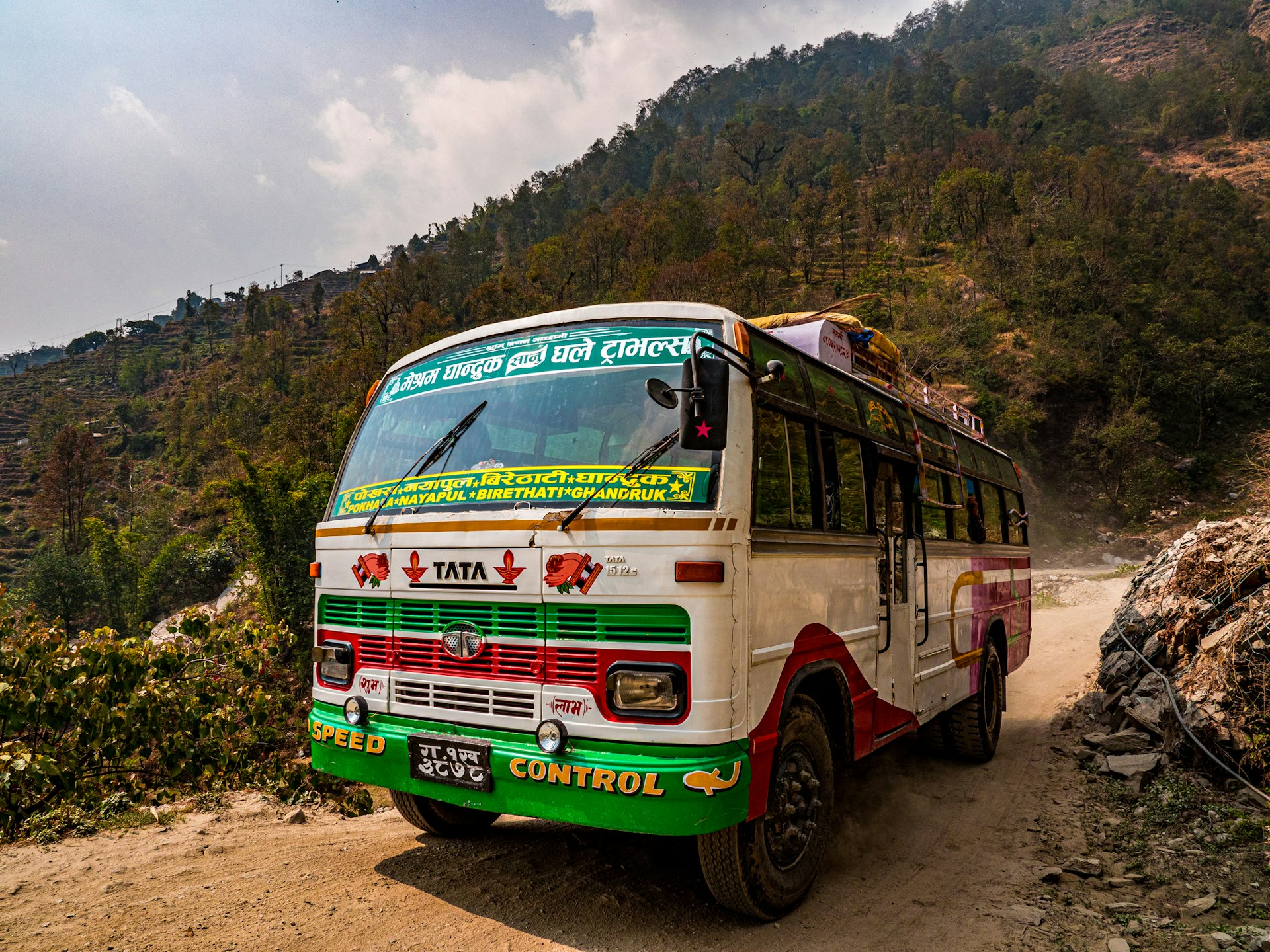
Hiring a car and driver brings more freedom
Hiring your own set of wheels gives you much more freedom to explore independently and get off the beaten track, especially in remote regions where public transport is limited or infrequent. Although there are no self-drive rental cars in Nepal, travel agencies across the country can organize a car (or jeep) with a local driver.
Day rates are significantly lower than in North America or Europe, and split between several people, this can be a surprisingly economical way to get around. Expect to pay between US$60 and US$100 per day, including fuel.
It is generally cheaper, though also less comfortable, to hire a taxi for a day – haggle directly with the driver to agree on a price. If you want to drive yourself, you’ll need to bring your own car into Nepal via one of the border crossings from India, with all the associated red tape.
Rent a motorbike for a Nepali road adventure
One popular way to self-drive is to hire a motorbike in Kathmandu or Pokhara. You'll need an international driving permit or a national driving license that allows you to ride motorcycles – a regular car license is not sufficient. Rental agencies will ask you to leave your passport behind as a deposit. Make sure your travel insurance covers you for riding a motorbike – few rental outlets provide insurance, which leaves you fully liable for accidents and damage.
Nepal is not a place for inexperienced motorcyclists: the roads are perilous and accidents are common. Use your horn on blind corners and always give way to any larger vehicle, particularly buses and trucks.
Travel tip: strikes can bring transport to a standstill
Nepal is prone to political troubles, and bandhs (strikes, called by unions, political parties or community groups) can bring transport to a halt across the country. If there is a strike, it's best not to try to travel, as vehicles that attempt to cross blockades are sometimes targeted by angry crowds. The government usually provides a special bus service taking passengers to Kathmandu's Tribhuvan International Airport.
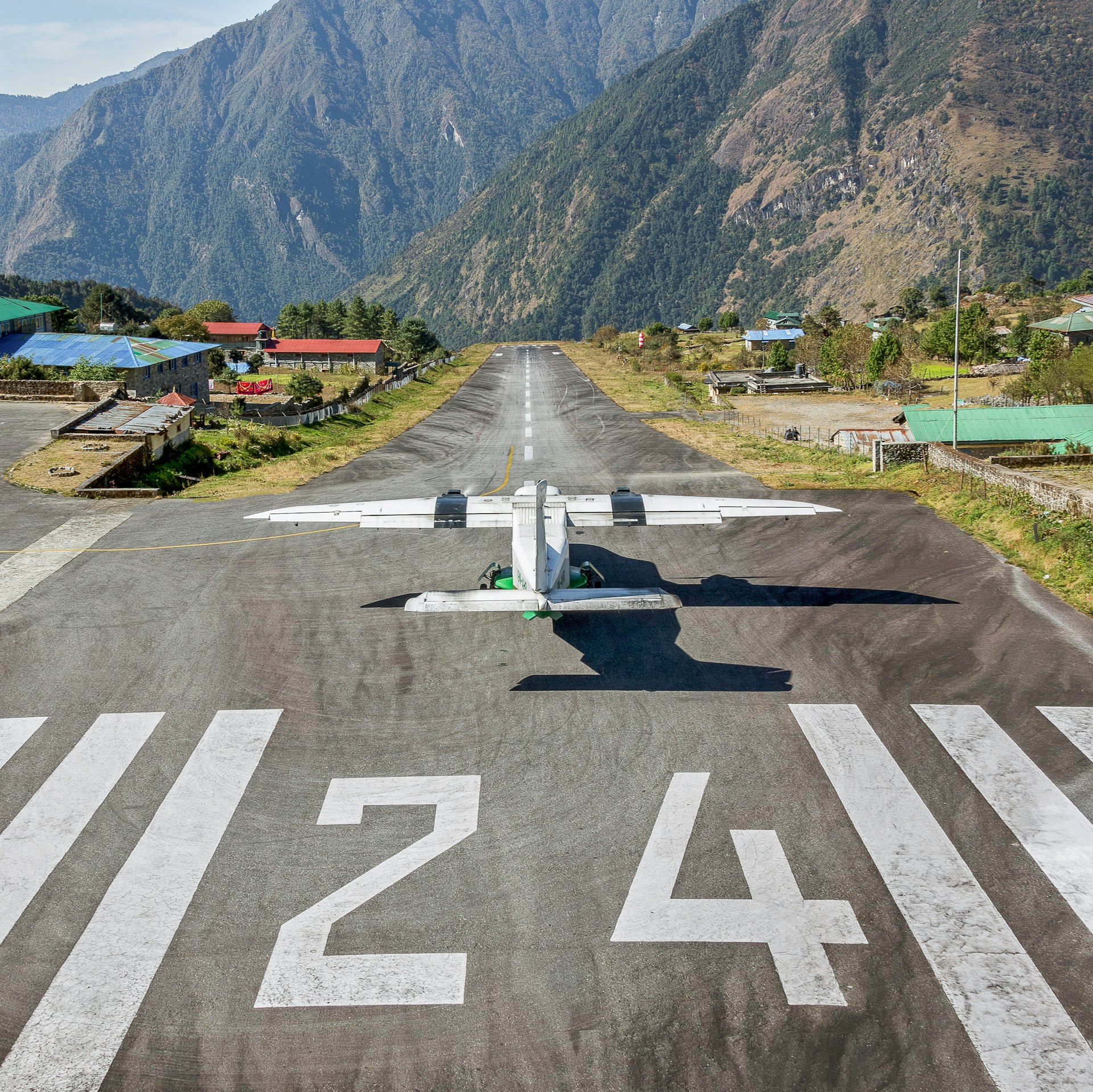
Airplanes can shorten journey times
Nepal has an extensive collection of small airstrips, including many in remote mountainous locations. Domestic flights are provided by a mix of government and private airlines – Nepal Airlines, the national carrier, has a wide range of domestic routes, serving everywhere from Simikot in the far west to Taplejung in the far east, using a tiny, aging fleet.
Its two main private rivals are Buddha Air and Yeti Airlines. Both fly to destinations across the country, including Pokhara and larger cities in the Terai. The busiest route in the country is the flight from Kathmandu to Lukla, the trailhead for treks to Everest Base Camp.
Most services originate or terminate in Kathmandu, but the western city of Nepalgunj in the Terai acts as a hub for flights to the northwest. Whoever you fly with, you'll get a grandstand view of the Himalayas en route if the skies are clear.
Flights are generally cheaper than in Europe and North America (you'll pay around US$120 from Kathmandu to Pokhara) and flying can be a great time-saver in comparison to traveling by road, though this comes with a much bigger carbon footprint.
Note that delays, cancellations and re-routings are common – Nepal Airlines has a reputation for being more unreliable than many of its privately-owned rivals. Small planes are used for domestic flights, so baggage allowances can be smaller than for international routes.
Is flying in Nepal safe?
It’s important to bear in mind Nepal’s patchy air safety record. There have been numerous fatal crashes in recent years, so weigh up the time saved against the dangers (and remember that road travel comes with its own risks). You can download the latest safety report from the Civil Aviation Association of Nepal.

Cycling is an excellent way to explore Nepal
Nepal is one of the world’s great mountain-biking destinations, and cycle touring is also an option in the Terai. Beyond the congested, traffic-snarled center of the Kathmandu Valley, there are many options for long-distance and multi-day cycles, including in many trekking areas. One popular route is the enjoyable five-day ride from Kathmandu to Pokhara via the historic Newari town of Gorkha.
Although you can ride many routes on your own, hiring a guide or going on an organized tour is recommended, particularly if you’re a relatively inexperienced rider. Bike rental is easy to organize in touristy areas – try specialist mountain biking operators such as Dawn Till Dusk and Himalayan Single Track in Kathmandu.
Why I love mountain biking in Nepal
Zipping along back roads and ancient trails on a mountain bike is my favorite way to explore rural Nepal. It gives you the independence to travel at your own pace and veer off on impromptu detours and side trips whenever you choose, while also providing a rewarding physical challenge.
Moreover, cycling has taken me to countless places in Nepal I would otherwise have missed – villages surrounded by terraced fields, isolated Himalayan viewpoints, little-visited areas of national parks. Just make sure you take a good, up-to-date map with you, as it’s easy to get lost!
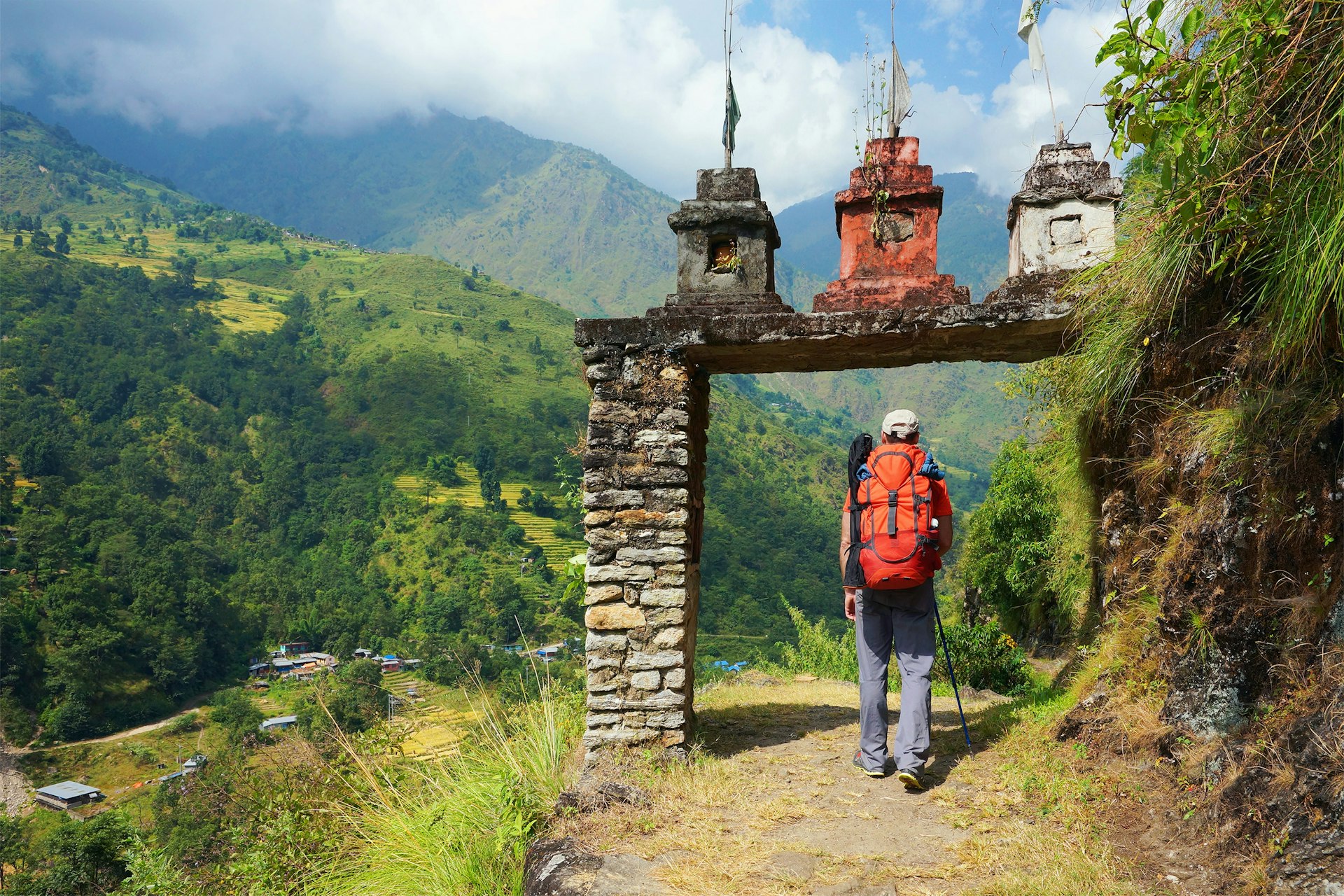
Trekking may be the only option in the mountains
Many areas of Nepal can only be reached on foot, and thousands of people come to Nepal specifically to go trekking in the Himalayas. The most famous trekking regions are the Annapurna Massif near Pokhara, the Langtang Valley near Syabrubesi, and the Everest region, northeast of Kathmandu. Most trailheads near Pokhara and the Lantang Valley are accessible by bus; trekkers heading to Everest usually fly into the tiny airstrip at Lukla.
Use rickshaws and taxis to travel around Nepal's cities
Ubiquitous in Kathmandu and other cities and large towns, cycle-rickshaws and autorickshaws are cheap and convenient ways to get around urban areas. There are no fixed prices – you’ll have to haggle with the driver. Tempos – large autorickshaws that follow fixed routes – are also useful; flag them down on the road and tap on the roof when you want to get off.
There are numerous taxis with meters (and black license plates) in Kathmandu, Pokhara and other cities. They can be flagged down or found loitering near the sights in touristy areas. You’ll have to strongly encourage the driver to use the meter (if they refuse, negotiate a reasonable fixed price before setting off).
Kathmandu also has a motorbike ride-hailing app, Tootle, which can be useful when trying to navigate the city traffic at busy times. However, safety is a consideration; with the chaotic traffic, you'll be safer in a taxi.
Accessible travel
Unfortunately, getting around Nepal can be a challenge for travelers with disabilities. Pavements and street crossings are rare, though some of the more expensive hotels have wheelchair-accessible rooms. You'll find few wheelchair facilities, ramps or lifts. Hiring a car and driver is a good option for getting around the country, while horses or mules can often be hired for treks. For more information, check out Lonely Planet’s Accessible Travel Online Resources.
You may also like:
Uncovering Kathmandu’s cosmopolitan culture: why you're going to want to linger longer
The best places to visit in Nepal, from mountains to Buddha's birthplace
15 of the best things to do in Nepal: experience the Himalaya

